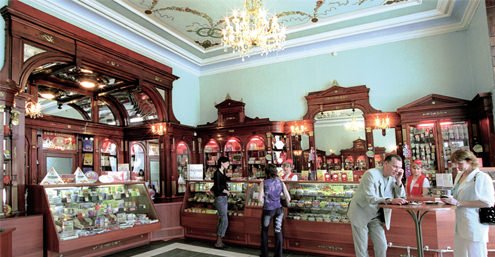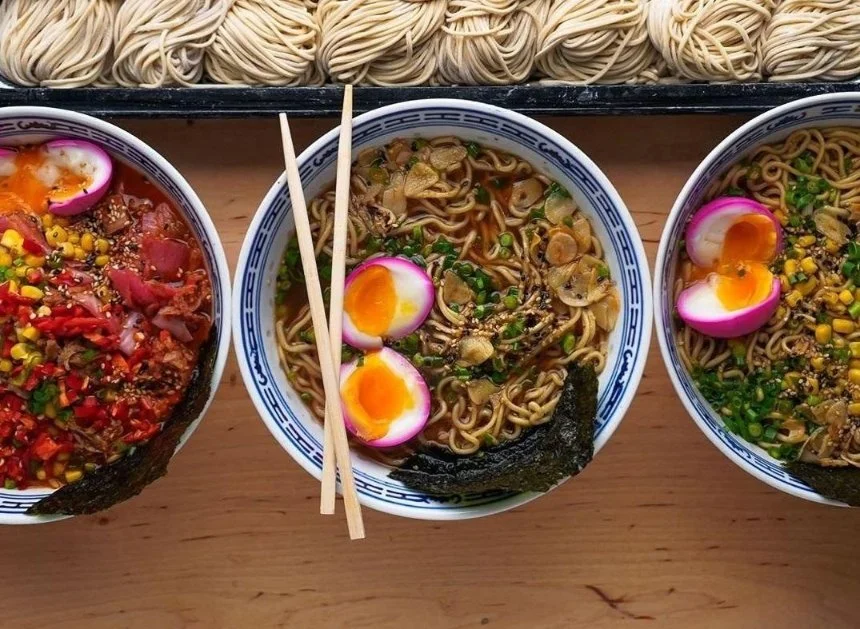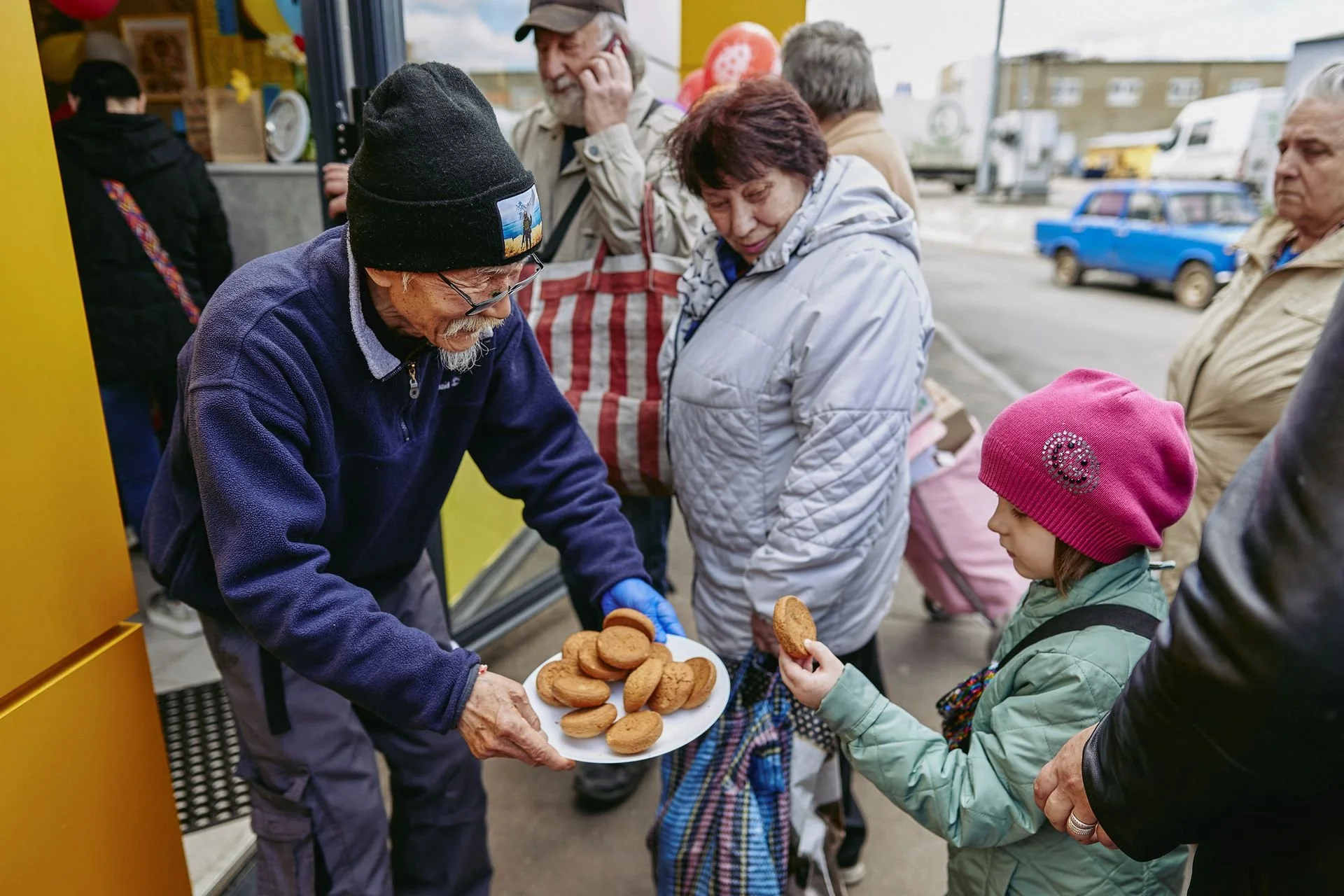Cooking Under Fire
Borscht, The National Dish of Ukraine (Image Source: Wikipedia)
Known as the “Breadbasket of Europe,” Ukraine had—and still has—a vibrant food culture. Ukraine’s national dish is borscht, a specialty beet soup, but Ukraine is also famous for dumplings, stuffed cabbage, and—you guessed it—bread. But after Russian President Vladimir Putin launched a full-scale invasion of Ukraine, people have stopped going to restaurants. Many can’t afford to eat out. Ukrainian restaurants were still recovering from the pandemic when Putin invaded, so this lack of business was especially detrimental. In fact, 90 to 95% of restaurants in Ukraine have closed down.
Some stores, like Kharkiv’s iconic 122-year-old candy shop Vedmedic, have been damaged by Russian shelling. Located right next to the National University of Arts in Kharkiv, Vedmedic sells chocolates, biscuits, marmalades, and marshmallows that are handmade in Vedmedic’s factories. Because it was originally built in 1900, Vedmedic is part candy shop and part museum. True to its originally design, the walls are lined with handcrafted wooden display cases filled with all kinds of candy. With its pristine architecture and heavenly smell of chocolate, Vedmedic is the oldest candy store in Kharkiv. While it continues to be open to this day, the front entrance no longer looks like the sweet, safe haven it used to be.


Vedmedic before and after the war began (Source: Vedmedic Website, Alex Motor)
Vedmedic is also known for its elaborate packaging. When Ukraine was part of the USSR, candy wrappers included tutorials for origami projects like paper flowers, and cards with pictures of famous Eastern European authors. More recently, the candy has been wrapped with cute images of children playing sports and animals.
Vedmedic Candy Wrappers (Source: Vedmedic Website)
From humble pizza shops to former Michelin-Star restaurants, many of the restaurants that remain open are now focused on volunteering to support people in need. In Dnipro, a city in central-eastern Ukraine, a pizzeria-turned-volunteer-kitchen has been making and giving away about 1000 meals a day. These meals go to the elderly, children, people hiding in bomb shelters or metro stations, and first responders. Like many other businesses, the pizzeria even delivers to those unable to leave their homes. The pizzeria and its 60 staff members have been relying on free ingredients from local farmers, donations, and their own extra money. The restaurant’s landlord has stopped charging rent, water, and electricity bills to support the pizzeria. They plan to continue giving away food until their funds dry up.
Food Preparations in Dnipro (Source: Ruslan Buriak, the pizzeria owner, via BBC)
Bigger food corporations, like LaFamiglia Group, also help in the effort to support struggling Ukrainian citizens. LaFamiglia Group owns restaurants, catering businesses, and food markets, so it's been able to use its own money to cover the costs of preparing free food. At the beginning of the war, LaFamiglia Group began giving away 8000 snacks and sandwiches and 5000 hot meals for free per day. “It's not the time to worry about finances, profits and margins,” says the corporation owner. “Now is the time for actions that are required of everyone in order to stop further destruction of lives.”
Others help the military, like Zhenya Mykhailenko, the founder of Ramen vs Marketing, a fancy Ramen restaurant in Kyiv. When the war began, Mykhailenko wanted to secure a stable source of business for himself and his team. So, his team started prepping food for the Ukrainian military. Mykhailenko owns several restaurants, and he turned one of them into a volunteer headquarters to organize all of the people offering to help him. Nicknamed “Dumbledore’s Army”, the volunteers cook Ukrainian dishes like borscht and salo, a Ukrainian equivalent of bacon that is essentially smoked, cured pork belly. (The Ukrainians in my life would be offended that I compared salo to bacon, but you get the idea.) The volunteers don’t always have enough spices or time to maintain the restaurant quality of the food, but many soldiers on the front lines are just happy to be fed at all.
Food at Ramen vs. Marketing before the invasion (Image Source: nashkiev.ua)
It’s not only Ukrainians who have been handing out food during the war. Meet Fuminori Tsuchiko, a Japanese national from Tokyo who moved to Ukraine to help people survive the invasion. For seven months, Tsuchiko willingly lived in a train station in Kharkiv, where many people were hiding to avoid dying from Russian missiles. He slept on the floor in what used to be a security checkpoint, and handed out food to other people who were also sheltering in the train station.
Tsuchiko handing out food at FuMi Caffe. (Image Source: Reuters)
When restaurants ran out of funding to give out food for free, Tsuchiko opened a free cafe called FuMi Caffe. The cafe is located in the Saltivka neighborhood of Kharkiv, the site of frequent Russian shelling. With the help of a Ukrainian friend and the monetary support of Japanese people on social media, Tsuchiko hands out free food to 500 people a day.
Whether they come from community organizers or larger restaurant corporations, efforts to give food and water are critical to the survival of many people in Ukraine. A study done at the beginning of the war estimated that more than one in three Ukrainians (36%) were food insecure, with higher rates of food insecurity for people of lower socio-economic classes, people in Eastern Ukraine, and people in communities targeted by Putin. The war in Ukraine has also caused a global food crisis, with Putin threatening to block grain exports from Ukraine to countries in Africa and Asia. It’s been more than a year since the war began, but Ukrainians continue to fight for their country and for each other, rallying together like never before. As long as the war rages on, the lives of millions of starving people hang in the balance.
Want to help feed vulnerable civilians in Ukraine? Check out the U.S.-Ukraine Foundation’s Food For Life project, the World Food Programme’s Ukraine emergency fund, and the World Central Kitchen’s Ukraine fund.
BY VERONIKA MOROZ




